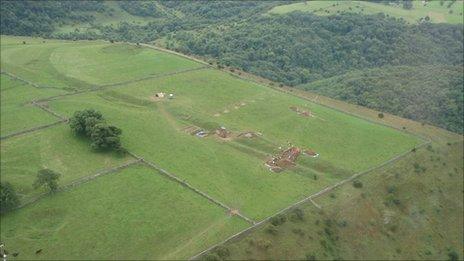Swedish archaeologists reveal 5th Century massacre at Sandby borg
- Published
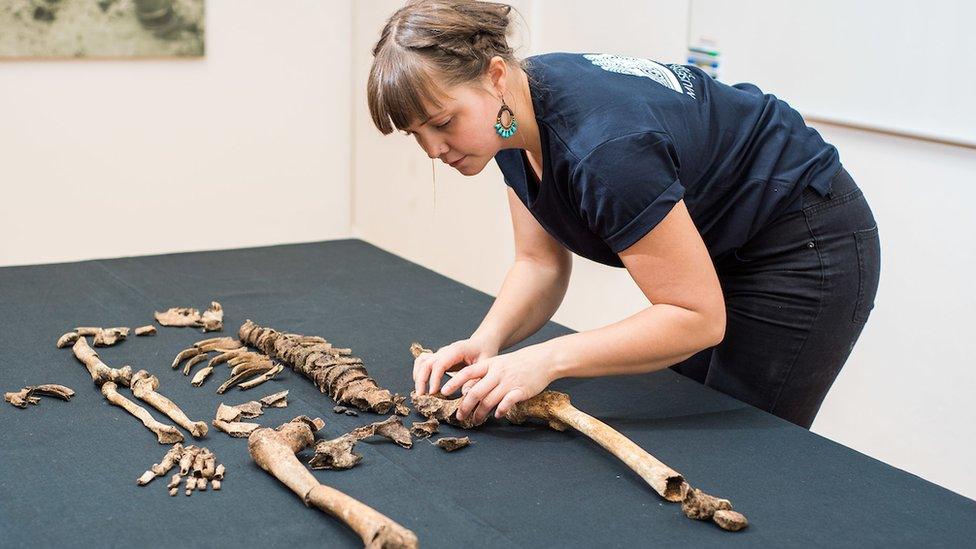
Team member Clara Alfsdotter arranges the remains of one victim
Swedish archaeologists have found evidence of a 5th century massacre on the south-eastern island of Oland.
In a paper published in the journal Antiquity, the team writes about the 1,500 year old attack at Sandby borg.
Dozens of corpses have been found in the walled fort, their bodies left to rot where they fell.
All of the victims were killed with "brutal force", team leader Helena Victor said. Some victims were found inside houses, others in the streets.
The archaeologists discovered decapitated bodies, blunt force trauma wounds to victims' heads, and even one person who seemed to have fallen into a fireplace in his final moments.
Even the corpse of a newborn was found among the dead, suggesting nobody was spared, the authors say, external.
The perpetrators of the massacre are not known, but it took place during a turbulent period of intense migration, when the Western Roman empire was collapsing and the Huns invading. The Baltic island of Oland was never under Roman rule.
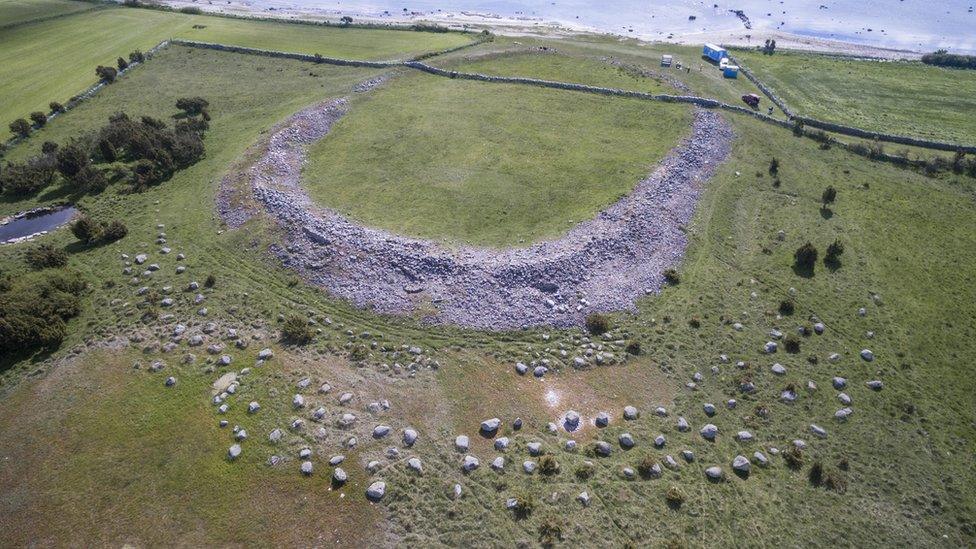
The walled fort at Sandby Borg
Local authorities asked staff at the Kalmar Lans Museum to examine the area after treasure hunters found items at the site.
The first dig lasted only three days, but after the discovery of the walls of houses the team quickly found human remains.
Ms Victor says the bodies in the houses raised alarm bells, as historically corpses were usually cremated - and certainly were not left in people's homes.
"You don't find people lying around in houses," Ms Victor told the BBC. "[People] don't do it today, and didn't do it then."
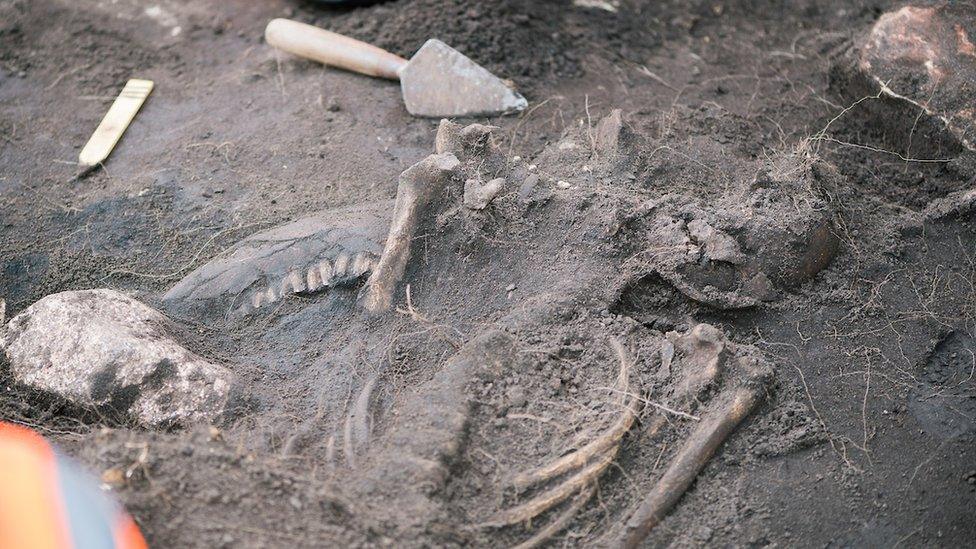
Examining some of the victims of the 5th-Century massacre
While villagers normally lived outside the walled fort, they would shelter there in times of danger.
Between 200 and 250 people are thought to have lived in the fort, and Ms Victor says it does not look as if they defended themselves.
"People seem to have been killed without defending themselves," said team leader Helena Victor. "It seems like treason."
She suggests someone may have left a door open and "let them in at night".

You may also be interested in:

The team have also found opulent jewellery at the site, as well as Roman gold coins, hair ornaments and scraps from final meals.
The summary for the journal paper describes the find as "a unique snapshot of domestic life and abrupt death in the Scandinavian Migration Period."
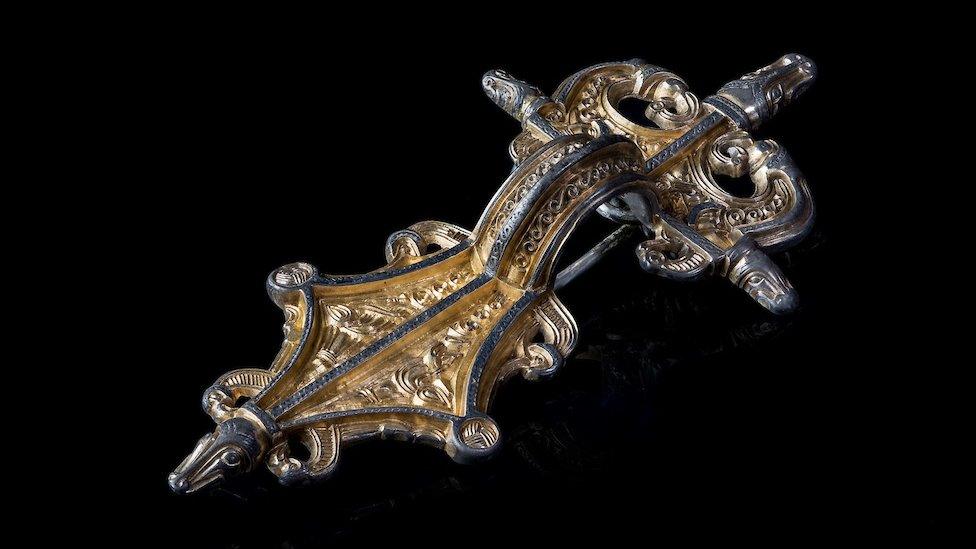
A brooch found at the dig site
Oland island in the south-east of Sweden has been inhabited since about 6000 BC, according to archaeological records.
There are at least 15 ring-forts on the island, although this is the first that seems to have suffered such a gruesome fate.
Despite the huge amount found so far, there is still a great deal to examine.
Only three of more than 50 houses have so far been excavated, with the team looking for further funds to carry on the dig.
"There is huge interest in this", Ms Victor says. "It's just the beginning for us."
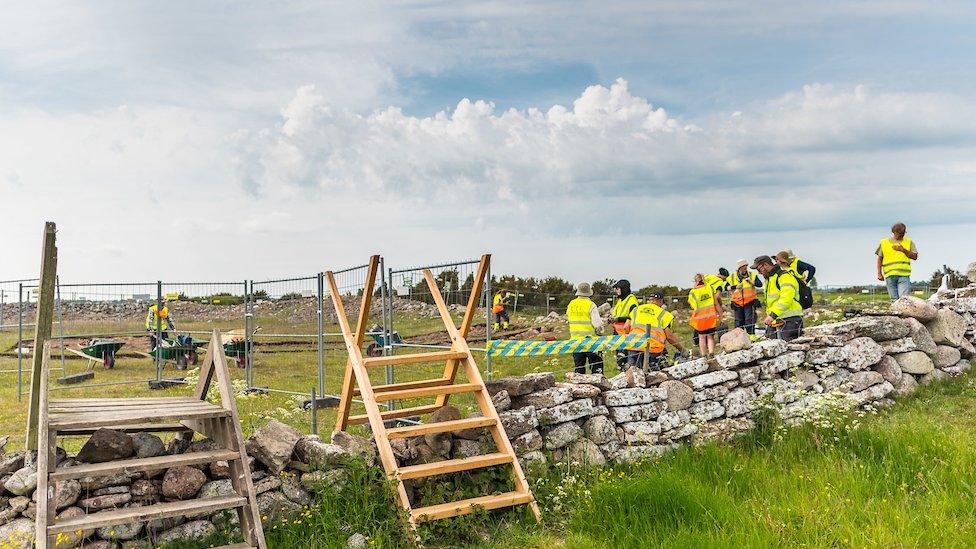
The team is looking for further funding to continue excavating the site
- Published16 March 2018

- Published22 February 2018
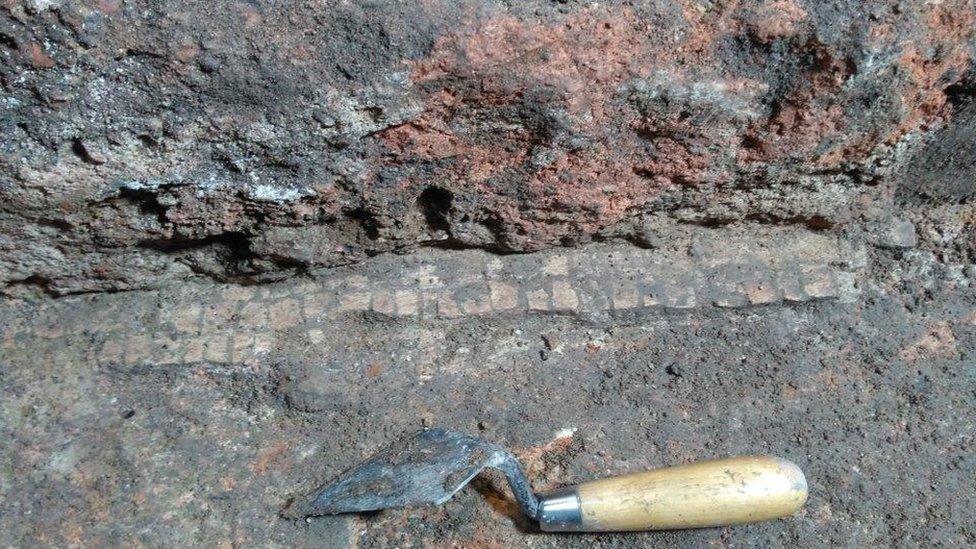
- Published21 January 2016

- Published18 April 2011
